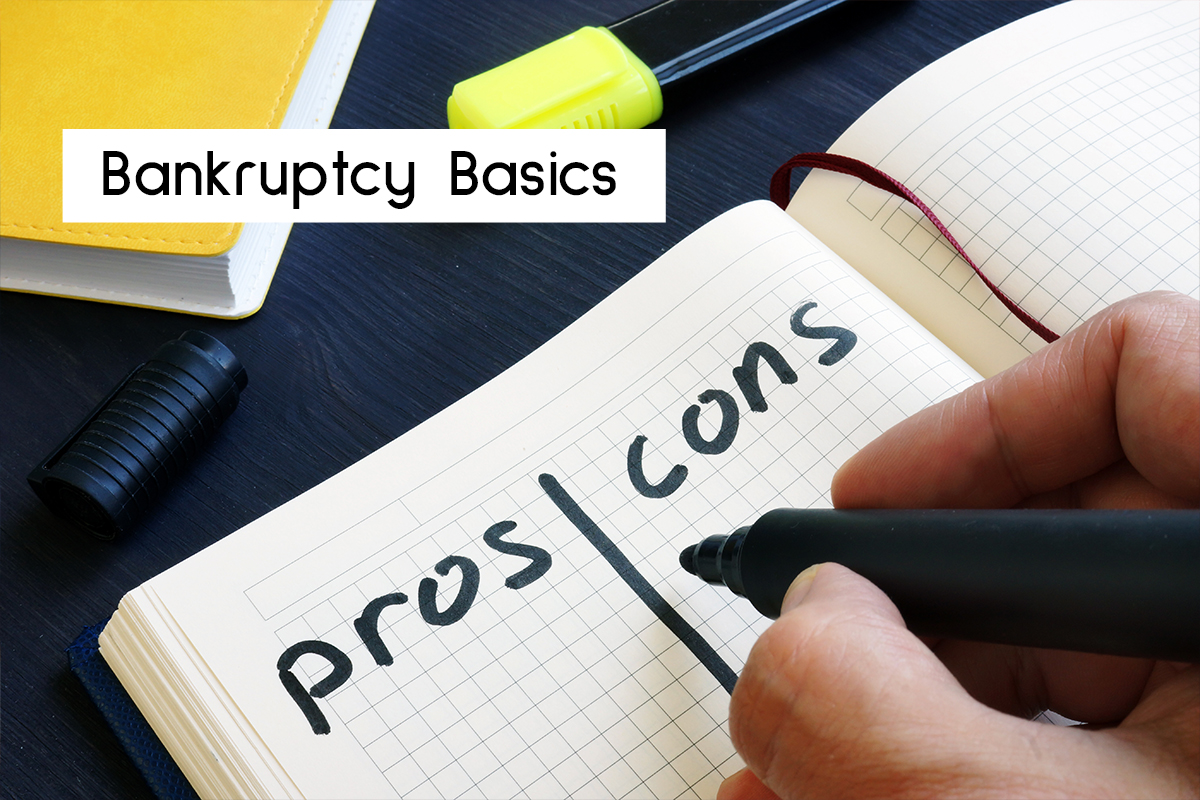Bankruptcy may be the only option for you and your family if you are drowning in debt and creditors are harassing you. Bankruptcy can help you come to terms with your creditors and give you a fresh financial start. Selecting the bankruptcy chapter that is right for you and your family is important.
Individuals filing for protection under bankruptcy laws want their debts discharged, but not all debts qualify for discharge. Items such as liens on collateral for homes or cars do not get discharged by bankruptcy. You also cannot discharge debts that you have incurred after filing for bankruptcy. In order to help you understand the process, here is some basic information specifically on Chapter 7 and 13.
The Process
In order to file for bankruptcy, you must submit a petition to your local federal bankruptcy court. Your petition will include information about your financial situation including income information, tax returns and mortgage and bank account statements. You will also be required to take a credit counseling course.
After filing, you and/or you and your attorney will meet with a court-appointed trustee. You are required to answer questions under oath about your ability to repay your debts. Depending on the type of bankruptcy you file, it could be months or years before a discharge is issued in your case.
When you file for bankruptcy, your creditors will immediately be blocked from harassing you with phone calls, letters and any other attempts to collect the debt. Although harassment must stop immediately, the effects of filing for bankruptcy can linger for years. Bankruptcy will stay on your credit report for up to 10 years. This does not make getting credit impossible, just more difficult.
Chapter 7 Bankruptcy
A Chapter 7 bankruptcy filing can take as little as four months from filing to the final resolution. The main reason for this is because there is no repayment plan involved. Filers may get to keep some of their personal property that is exempt from liquidation. Exemptions will vary by state, but they could include clothing, furniture and your car.
A tool used during Chapter 7 is reaffirmation. Reaffirmation gives you some flexibility to keep an asset. For example, if you wish to keep a secured debt such as your car, you can reaffirm the debt and agree to pay all, or a portion, of the amount owed to the creditor.
A downside of filing for Chapter 7 is that you will have to sell the non-exempt assets you are not allowed to keep. Another downside is that any co-signers may have to pay their portion of the debt even if your portion is discharged. And you can only file Chapter 7 bankruptcy once every eight years.
Not everyone qualities for Chapter 7. In order to qualify, your monthly income must be less than the median income for your specific household size. You will have to pass a means test to qualify if your monthly income is too high. And, if you have too much disposable income under the means test, the court may reject your petition. But do not worry, if Chapter 7 is not for you, you may qualify to file for Chapter 13.
Chapter 13 Bankruptcy
A Chapter 13 filing allows you to keep more property. However, you will have to repay your debts over a period of time which is typically three to five years. With Chapter 13, you can protect your home from foreclosure, and you are allowed to catch up on late mortgage payments. Your other debts can also be restructured to allow you more time to pay them off.
Filing for Chapter 13 requires you to submit a repayment plan which has to be approved by the court appointed trustee at your court hearing. Once agreed upon, you will make payments to the trustee, who in turn distributes the funds to your creditors. By doing this, you will not have any contact with the creditors. Monthly payments usually start within 30 days of the hearing.
The downside of Chapter 13 is your debts must be repaid. The repayment plan process normally takes up to five years, and upon completion, the court will discharge your debt.
Which Type is Right for You?
The decision to seek bankruptcy protection can have ramifications that will last for years. Selecting the right bankruptcy type for you and your family can be overwhelming and very confusing. You can go about the process alone; however, an experienced bankruptcy attorney can help navigate the situation with ease.
Let us help. Call Leslie Craft at Craft Law Offices. Leslie has over 30 years of bankruptcy experience, and she is ready to guide you through the process. She will ensure that you make the best decision for you and your family. To schedule a free bankruptcy consultation, call 252-752-0297.



